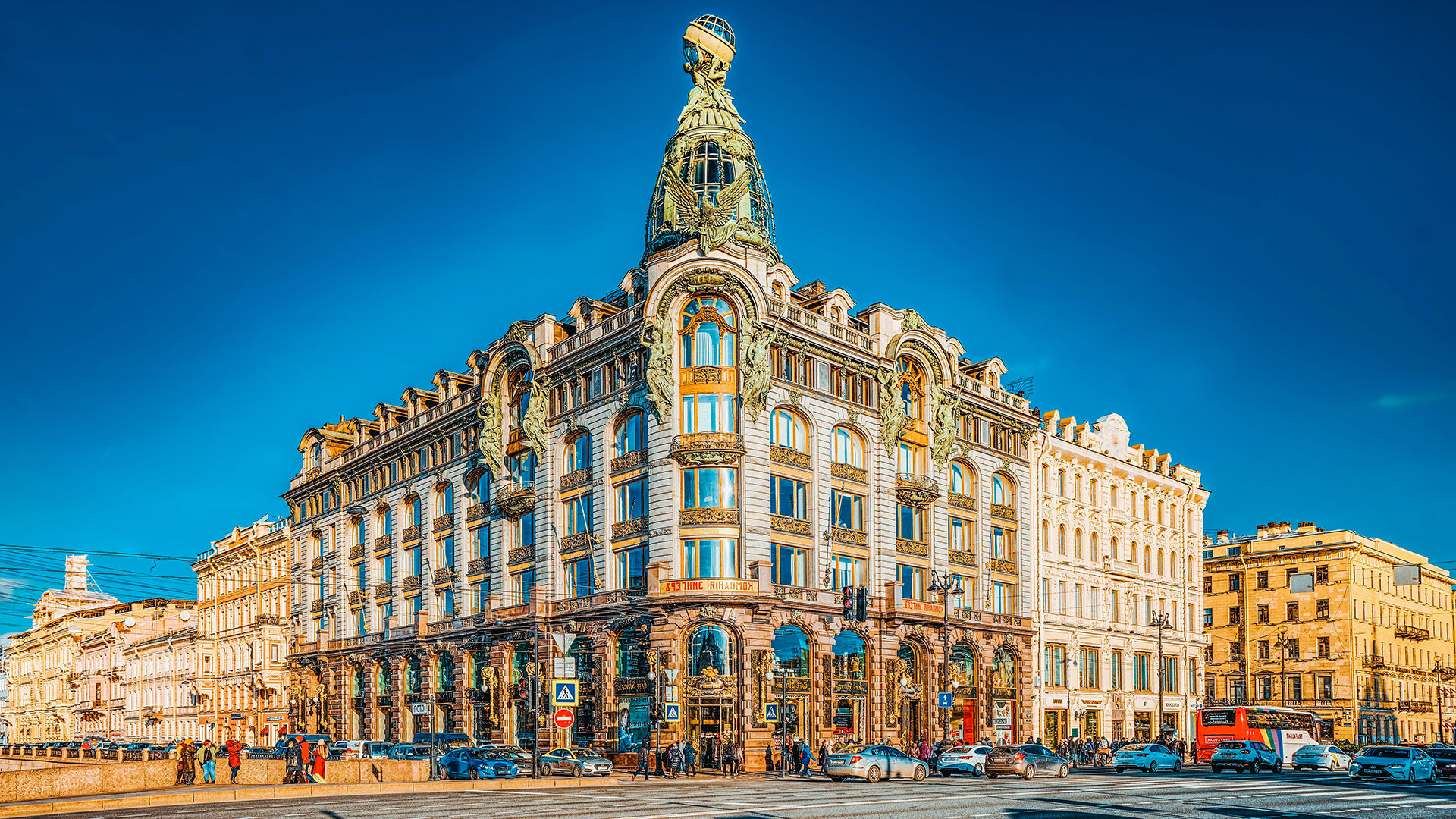
‘Singer’ sewing machines first appeared in Russia in the 1860s: They were supplied from Germany. Later, a workshop for their assembly was set up outside today’s Volgograd. The year 1897 saw the appearance of a joint-stock company operating under the name ‘Singer Manufacturing Company’, which, in a short space of time, built a fully equipped factory in Podolsk near Moscow. Also at that time, the company’s American owners sought to open an office in St. Petersburg: In the early 20th century, the company bought a plot of land right on Nevsky Prospect.

‘Singer’ sewing machines' ads, 1900s.
Public domainUnder the ambitious plans, a kind of American skyscraper was to be built in the capital of Russia - an eight-storey (according to some sources, 11-storey) building with ultra-modern features. These dreams, however, had to be modified: It turned out that buildings higher than 23.5 meters were not permitted in the center of St. Petersburg owing to the historic fabric of the city.
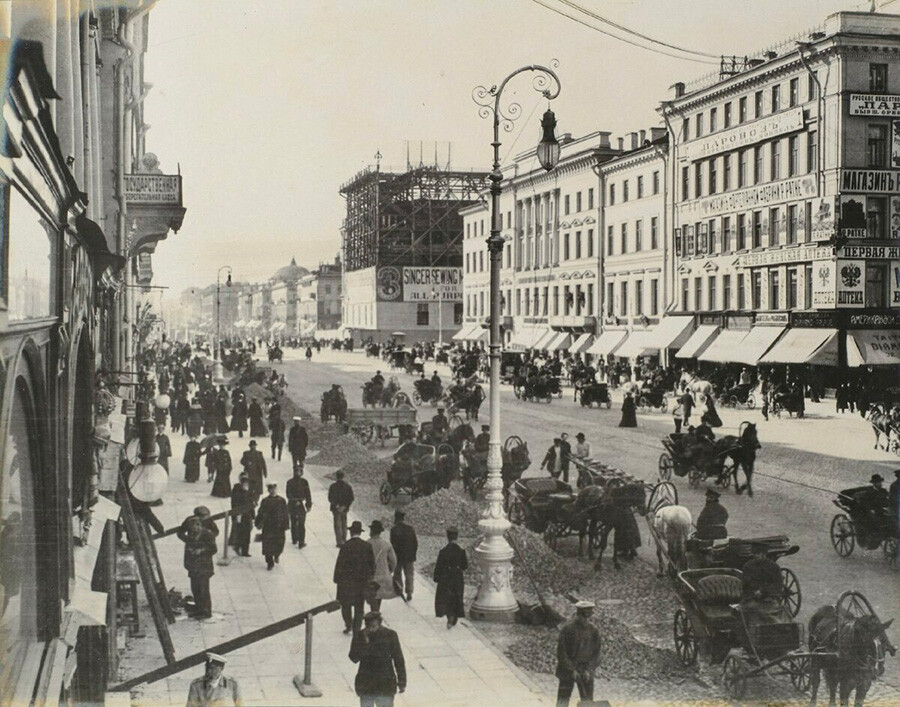
Under construction. The view of 1902-1903.
Public domainThe plans for the project were drawn up by architect Pavel Suzor, who had built around a hundred rental apartment blocks in the city. He found working with the Americans difficult. The client demanded that the facade should match the appearance of the company’s headquarters in New York, but Suzor insisted on the eclectic local style, a mixture of Art Nouveau and Classicism. Also, the architect had no intention of abandoning his creative approach.
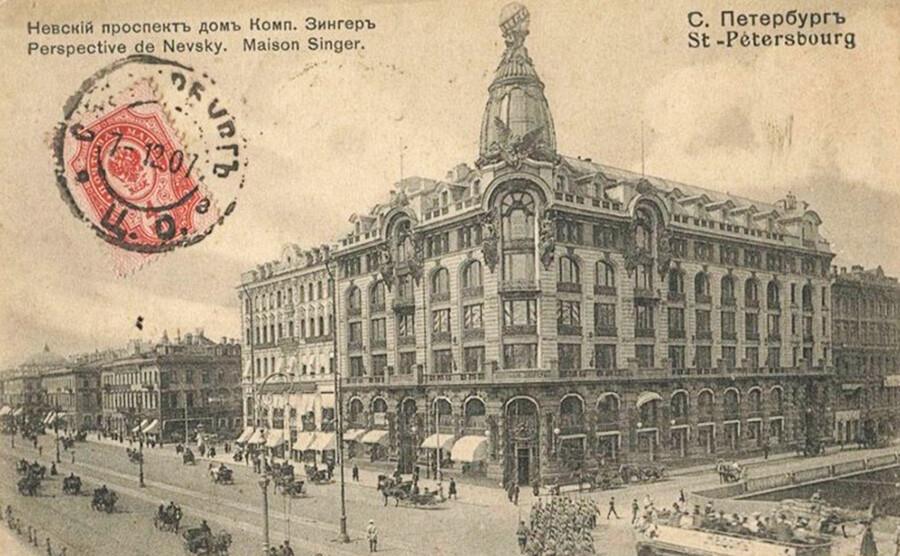
The old postcard, 1905-1907.
Public domainAs a result of various compromises, a six-story building with an atrium, a mansard roof and a corner glass dome appeared on the city’s main avenue in 1904. During its construction, what were then the most state-of-the-art solutions were employed: The building had an iron frame, the drain pipes were hidden inside the walls, the air inside was purified, heated and humidified, while the roof was kept clear of snow using an automatic steam system.
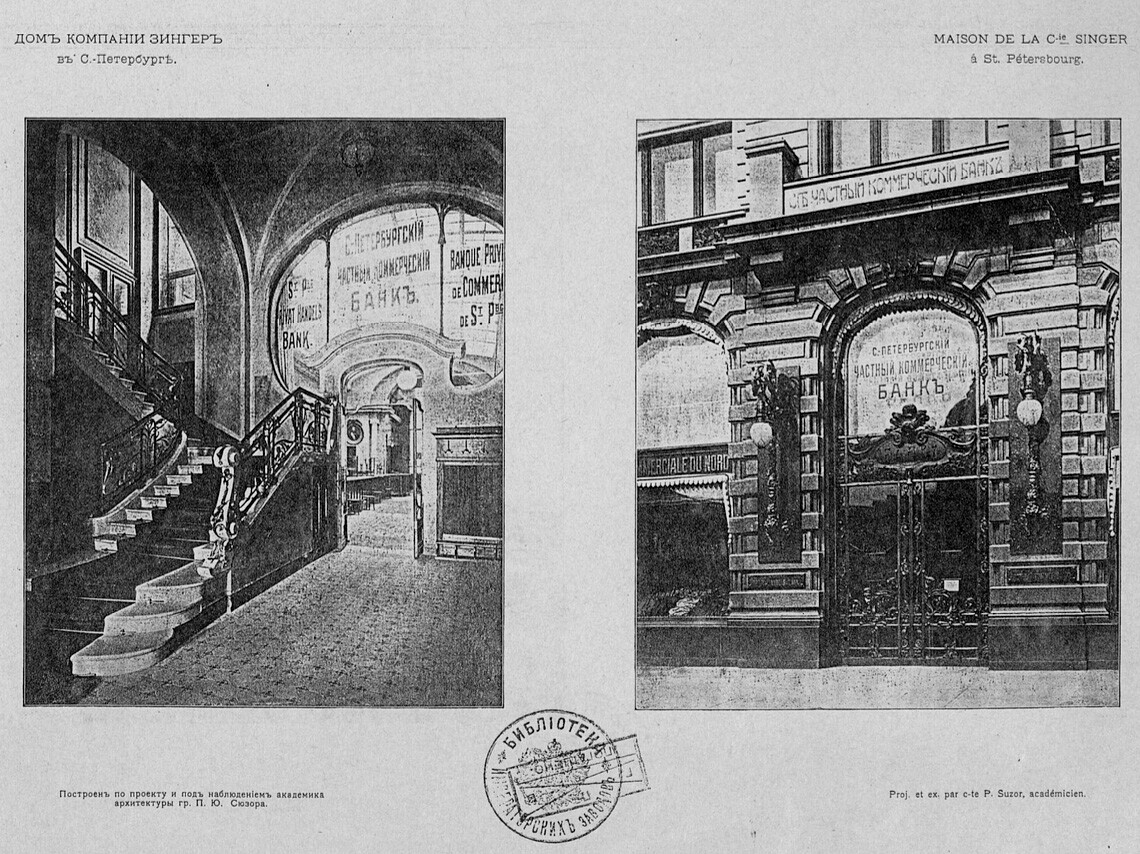
Inside the Singer Building. Pics from the Zodchy ("Architector") magazine, 1906.
Public domainThe facades were lined with granite of different hues and adorned with forged bronze figures. Three elevators were installed inside. An eagle was placed on the building (the work of sculptor Artemy Ober) - on its breast was a shield with stars and stripes, a reference to the American flag.
The building received a mixed reception from local residents. They failed to appreciate its progressive style and dubbed it a “scent bottle” and even described it as a “decayed tooth in the jaw of Nevsky Prospect”. People were also annoyed by the fact that the building had still breached height restrictions: The glass corner tower with its globe became a new dominating landmark on Nevsky Prospect.
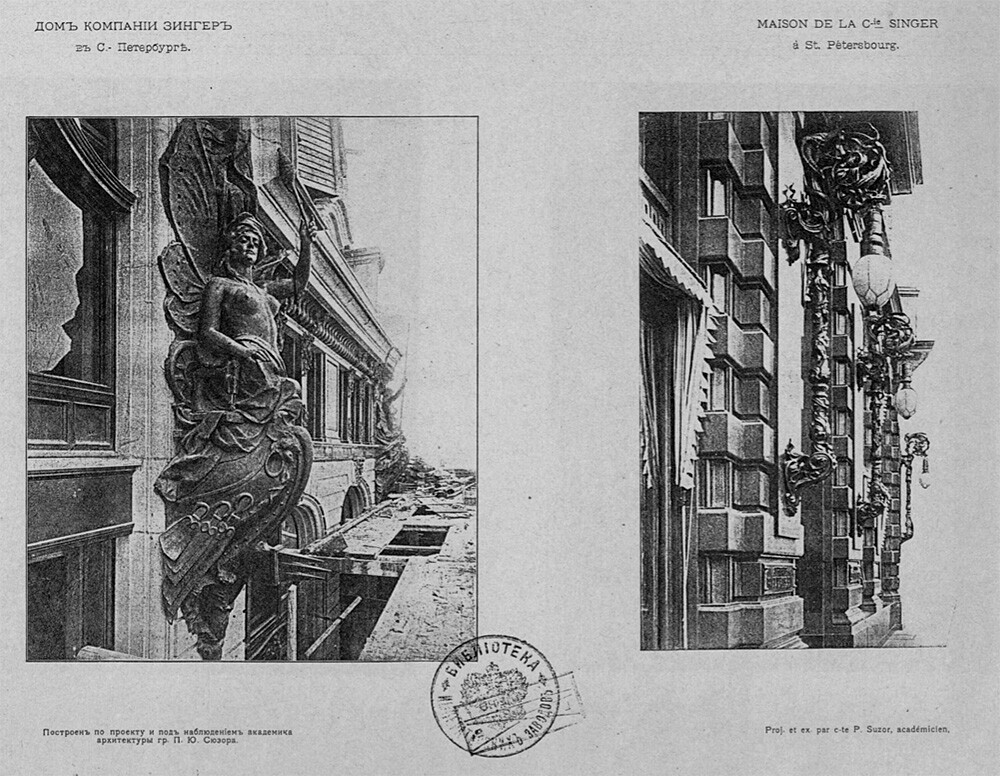
Inside the Singer Building. Pics from the Zodchy ("Architector") magazine, 1906.
Public domainApart from the Singer offices, the building housed banks, the New York Insurance Company and trading companies. The building became one of the country’s first business centers.
During the years of World War I, the American company started to be associated with Germany, because of its founder’s German surname - and its representatives were even suspected of spying, even though, aside from its commercial operations, ‘Singer’ was sewing military uniforms for the Russian army. In order to end the undesirable associations, the company management leased the lower floor to the American Consulate in the years 1917-18.
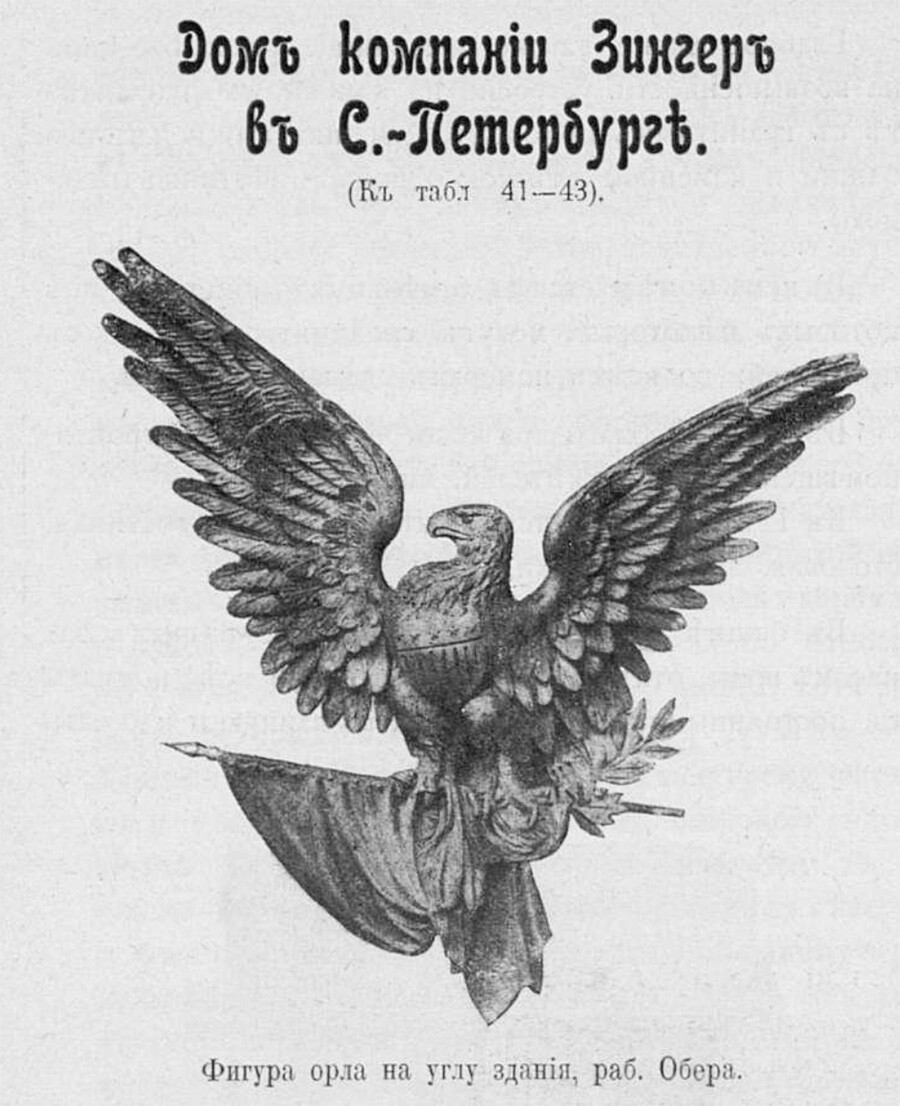
The eage on the Singer Building. The photo from the Zodchy ("Architector") magazine, 1906.
Public domainOn March 20, 1917 the American consul, North Winship, telegraphed the U.S. secretary of state regarding the revolutionary events in Petrograd, noting that the Singer Building was in the epicenter of gun battles.
“During these two days, the fighting around the Consulate was severe and, on several occasions, it seemed as if nothing could save the Singer Building from total demolition. Machine guns were presumably being operated from points of advantage in this building by police agents, as well as from neighboring buildings, the revolutionists replying with volleys from their rifles and machine guns mounted in automobiles.”

Winship complained that, in spite of the presence of American insignia and the American eagle on the facade, the German company name was weighing negatively on public opinion.
“I have had to defend the American eagle on the top of the building, as it was believed to be a German eagle and the crowd intended to tear it down until I explained in Russian the difference between the American and German eagle.”
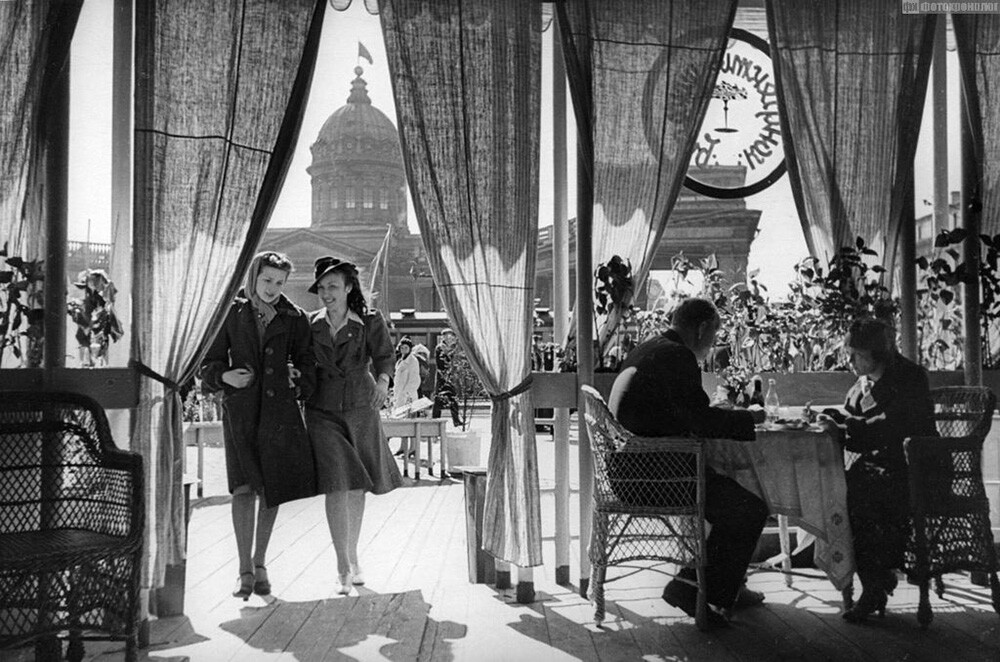
The photo of 1920s-1940s.
Public domainThe eagle on the Singer Building was eventually draped in the Stars and Stripes and only the beak remained protruding from the folds of the flag. In the 1920s, it was dismantled altogether.
In 1918, in the face of the German advance on Petrograd, foreign diplomats were evacuated from the city. The Singer company offices continued to function here until 1922, even after the building was nationalized. They just had to share it with Soviet agencies and offices, from publishing houses to the Soviet censorship committee.
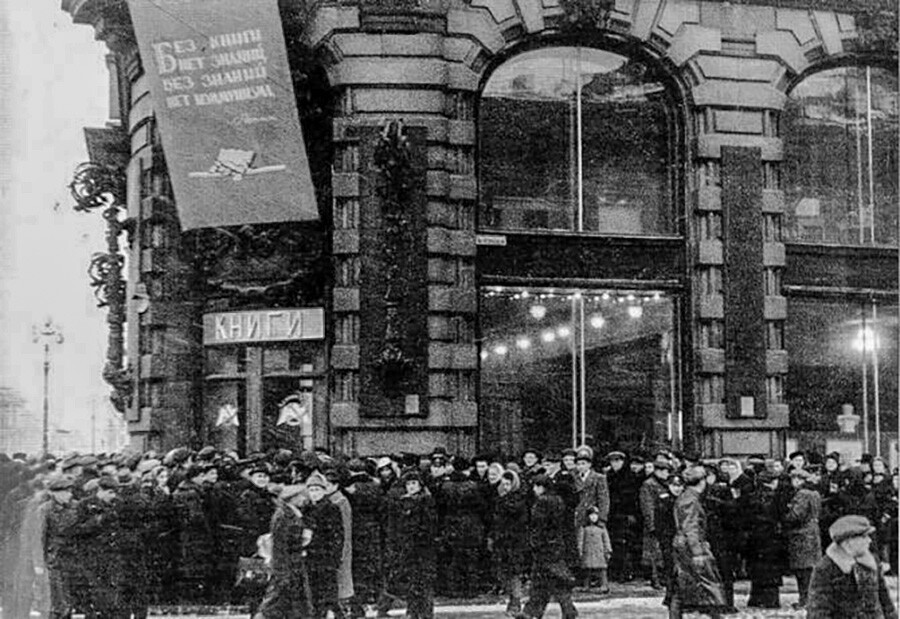
Opening of the House of Books after restoration, 1948.
Public domainIn 1919, a ‘Dom Knigi’ bookshop also opened on the first two floors - it was a trailblazer of the state book trade in the city. It continues to function to this day, in the past 100 years having only closed for three months during the Siege of Leningrad and for several years for restoration.
Dear readers,
Our website and social media accounts are under threat of being restricted or banned, due to the current circumstances. So, to keep up with our latest content, simply do the following:
If using any of Russia Beyond's content, partly or in full, always provide an active hyperlink to the original material.
Subscribe
to our newsletter!
Get the week's best stories straight to your inbox